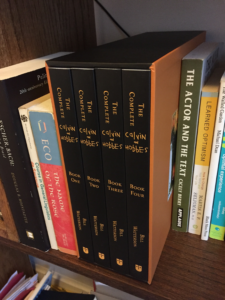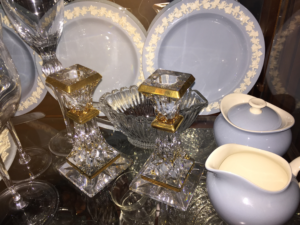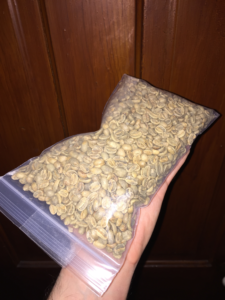Christmas gifts are somewhat misunderstood… or misinterpreted.
Yes, every Thanksgiving, people load into their cars to interrupt the day Lincoln proclaimed “should be solemnly, reverently and gratefully acknowledged” in order to compete with each other for Doorbusters. Yes, the rest of us who aren’t that crazy look on in horror at the news of someone who got trampled to death for a cheap flatscreen.
The wonderful part of a Christmas present is to know someone well enough that you can give them a gift that reflects who they are and who you are. People can argue how commercialized Christmas gifts are. That won’t stop, though, the fact that giving (and receiving!) gifts is a wonderful reflection of Advent.
In that spirit, here are a few gifts I’m grateful for and touched by, and a tiny story of each:
Bill Watterson’s Complete Calvin and Hobbes (a gift from my brother-in-law)

I’ve never been an avid reader of comic strips, graphic novels, etc. In college, though, my mentor would use Calvin and Hobbes comic strips to quiz us to see if we could identify the technical information regarding the story. I remember the first time he gave us the panels from one of Watterson’s strips, and I had a brief panic attack: “There are three line drawings, and maybe three sentences of dialogue here, tops. I can’t tease out a technical analysis from this!” I was wrong, and only then, taking a quiz in college, did I start realizing how wonderfully, charmingly complex Watterson’s work is.
On Christmas Day, I sat down, and pulled out the Introduction to the set. Among the wonderful history of a boy and his tiger, Watterson confirms something I’ve had a hunch about all along: “I don’t think paintings do such a good job of storytelling. Even the wonderful Old Master illustrations of Biblical events can be fairly perplexing if you don’t already know the stories. A single picture can’t show the passage of time…”
Salad plates from our china pattern (gifts from my sister- and mother-in-law)
This is what most people think of dress china:
I’ll leave aside the technical details that bone or porcelain china is more durable than the stoneware people typically use every day. Not everyone geeks out about china and crystal, I’ve heard.
 A big question in any marriage (or life in general) is, “What makes something special?” I grew up with lots of family gathered around the table for Easter, Thanksgiving, Christmas, birthdays, and on and on. There’s every reason, though, on special occasions — from Easter dinner all the way to date-on-a-Tuesday-we-both-happen-to-be-free night — to make things special. Dress things up, for no reason, except we agree that “this is nice, and we’re celebrating simply because we can”.
A big question in any marriage (or life in general) is, “What makes something special?” I grew up with lots of family gathered around the table for Easter, Thanksgiving, Christmas, birthdays, and on and on. There’s every reason, though, on special occasions — from Easter dinner all the way to date-on-a-Tuesday-we-both-happen-to-be-free night — to make things special. Dress things up, for no reason, except we agree that “this is nice, and we’re celebrating simply because we can”.
That’s why I like having dress china, and I don’t know why anyone who’s in a committed relationship wouldn’t want it. Picking out china was a treasure hunt for us (and is not a bad way to get used to marital compromises and cooperation). It’s also a nice way to reaffirm to one another that yes, these are fairly expensive plates, and yes, we’re going to get a lot of use out of them. We can celebrate nothing at all besides the fact we’re eating a meal. We can celebrate the fact that look at us! we’re hosting Thanksgiving!
Unroasted coffee cherries (a gift from my mother-in-law)
 I grew up surrounded by farmland. My education and life since then has taken me away from the farm. When I think about a life of labor in the dirt that all my ancestors had, I feel a little disconnected. Some of the ways I like to try and get that connection back is by reminding myself that beef comes from a living animal, not from supermarkets and that coffee is a plant, not a fast-food beverage. I’ll admit, I’m not likely to sign up to slaughter a cow anytime soon. So that leaves coffee.
I grew up surrounded by farmland. My education and life since then has taken me away from the farm. When I think about a life of labor in the dirt that all my ancestors had, I feel a little disconnected. Some of the ways I like to try and get that connection back is by reminding myself that beef comes from a living animal, not from supermarkets and that coffee is a plant, not a fast-food beverage. I’ll admit, I’m not likely to sign up to slaughter a cow anytime soon. So that leaves coffee.
One of the wonderful things about food and drink is that you’re never done learning. Roasting my own beans sounds like a safe little adventure to figure out a little bit more about coffee (and make my kitchen smell like a coffee house). Plus, my wife got me a beautiful new French Press, so we’re all set!
A Tibetan singing bowl (a gift from my cousin):
Every time I go back to the house I grew up in, I’m shocked by how quiet (and dark) it is. I can see stars in Bureau County, Illinois, while I can only see an orange haze here in Chicago. Even on our quiet street, I’m used to the faint background rumble of 2.7 million people living in the same place I do. When I’m at my parents’, it surprises me just how noisy we all are.
My mind is a little frenetic, anyway, so slowing it down is tough for me. That mind is curious, and that makes it hard for me to be comfortable and calm with complete silence. The balance in between is the music of a single note. When I was at Cornell, one of my favorite sounds of the campus was when the Cornell Chimes had finished playing. The giant bells keep vibrating after the song is over. It’s a kind of pile of sound, and it’s even more visceral if you’re next to the Chimes when it happens.
A Tibetan singing bowl is a little reminder of that serenity. It’s very calming and meditative. You ring the bell, and then keep the vibration going by moving the wooden mallet along the rim of the bowl, the same way you can play a note on a crystal glass. It’s just one note to focus on (a miniature pile of sound), and it’s active. Keeping the note alive with the mallet is a balance of pressure and speed along the metal bowl’s rim.
Merry Christmas and Happy New Year, everyone!

